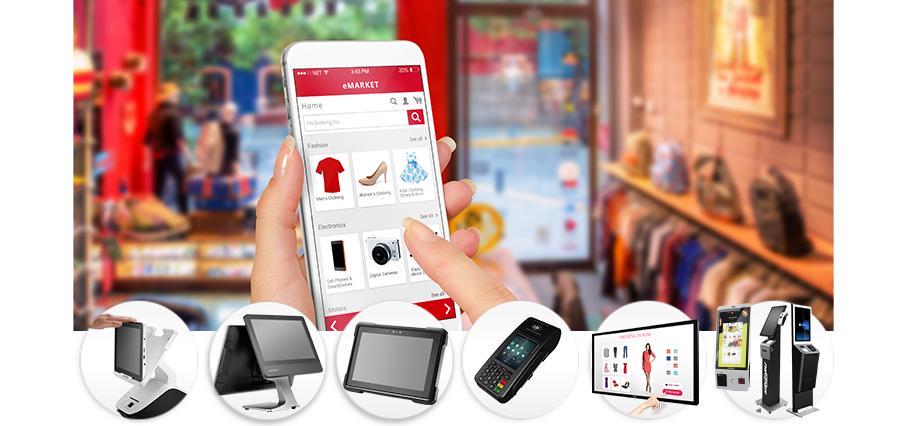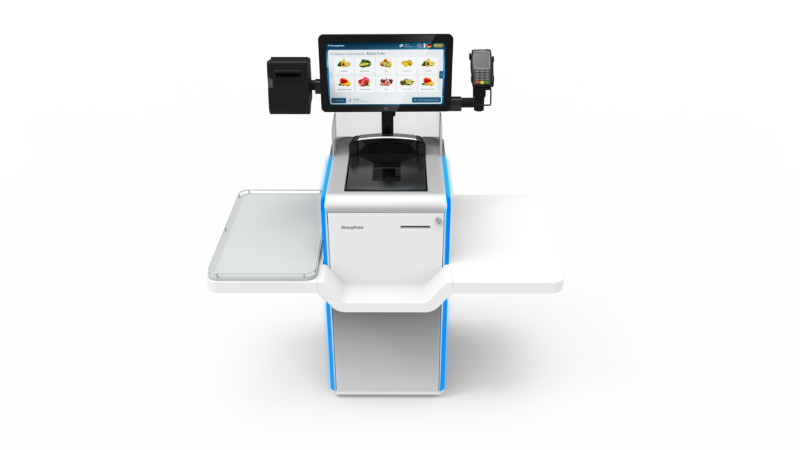Only 100 years ago, a retailer needed two things to be successful: a good shop location and a good product. Over time, customers have become more demanding. Their patience has diminished and today customers expect fast access to everything. From furniture to groceries. That is why they visit stationary shops. You buy and you take with you. Are self-checkouts in fashion shops necessary? If a customer came into a shop, he was counting on the service of a sales assistant not a machine, but is that really enough for him?
Self-checkouts in clothing shops versus sales assistants.
From a business strategy perspective, the expansion of self-checkouts in grocery shops seems logical. The barrier to entry as well as the level of risk involved is simply low. Does this argument also apply to the clothing industry? Does the customer simply want to buy clothes quickly and leave, or has he or she gone to the shop because they expect another human being to interact?
Recently, the millennial generation, people born in the 1980s and 1990s, have been present on the market with their own money. It is not without reason that this generation is also called the digital generation. They have had contact with new technologies since birth, they are not afraid of them, on the contrary, they expect them to develop. To choose the right clothes, size or to pay, they do not expect the assistance of a salesman. And it is this generation that is currently setting the trends for automation in shops. This generation is just beginning to accumulate material goods, buying flats, cars, furniture and, of course, clothes. Being familiar with new technologies makes them want to be in control of their purchases, including payments. Long gone are the days when you had to fully rely on the salesperson to ask for a different size or product. Self-service gives customers what they want – convenience.
Fast service and lack of appearance evaluation – positive values.
Another fact is that nowadays retailers have to provide faster order processing than ever before in order to meet customer demands. This also applies to stationary shops, where long queues in times of widespread online shopping are highly risky. Standing in line is a far cry from the ease afforded to us by the era of developing self-service. Thanks to self-service checkouts, shopping in a stationary shop can be fast and convenient, and what is more, it gives an advantage over online shopping – the customer receives the product immediately.
Another positive shopping experience that self-service technology can provide to the clothing shop customer is the lack of judgement. Shoppers do not have to feel judged by staff for how they look. Shopping becomes enjoyable. The customer himself chooses the clothes he needs, their size, evaluates his own appearance and pays for them himself. We should also mention the recent fashion for conscious shopping. Our purchases are becoming more and more conscious, and we do not want to have clothes in our wardrobes that we do not wear. We do not want someone to tell us what we should buy. Self-service gives us time to think whether we really need the clothes and whether we want them in our wardrobe. The salesperson has no knowledge of us or our wardrobe, their job is to sell the product.

Chain stores and high fashion.
Self-checkouts in fashion shops seem to be a good solution for fast fashion retailers, where the traffic in the shop is high and shoppers are time-constrained. In these types of shops, controlling queues at the point of sale is a priority. In comparison, for higher-end shops there is a disconnect between the values of automation and the need for personalised service and human interaction. But is it really?
In the past, many luxury brands believed that e-commerce would have no impact in an industry where the need to be taken care of by a salesperson is what matters. However, this assumption was very quickly proven wrong. Today, all high fashion shops offer online shops and are enjoying growing revenues.
Naturally, when it comes to luxury clothing shops, the human factor is an important part of the service. Technology will not provide the level of care, attention and assistance that a retailer offers. It is interaction and engagement that is an essential part of providing a luxury experience. On the other hand, as the rise of e-commerce has shown, technology cannot be ignored. To be successful, a balance must be found between the online and offline experience.
While the luxury shopper expects interaction from the retailer when choosing clothes or shoes, queuing at the checkout is not desirable.
Self-service in a fashion shop.
The decisive factor in implementing self-checkouts in fashion shops is their appearance. A self-checkout in the fashion industry must be ‘fashion’. It can complement the design of the shop and provide a more convenient way to buy clothes. Of course, functionality is most important, but a nice self-checkout can be the icing on the cake.
For clothing shops, the most sensible solution seems to be the introduction of self-service checkouts based on RFID technology. This technology makes shopping even more convenient as the customer does not have to scan the clothes, just place them in the packing area. It should be mentioned that after paying for the product, the customer deactivates the anti-theft protection himself, which makes the final stage of shopping fully self-service and allows retailers to focus on providing advice or replenishing goods.
Shopping at a self-checkout becomes similar to shopping online. In both cases, the customer does not need the assistance of a salesperson to have a positive experience. Responding to market demands, all retailers face the challenge of making the service process as smooth, efficient and convenient as possible. Self-service technology plays a big part in this, especially when it comes to finalising purchases. We are in a process of radical technological change when it comes to customer service. Some brands are slowly adapting to it, some are still figuring it out but either way change is inevitable and it’s better to stay ahead than behind.


